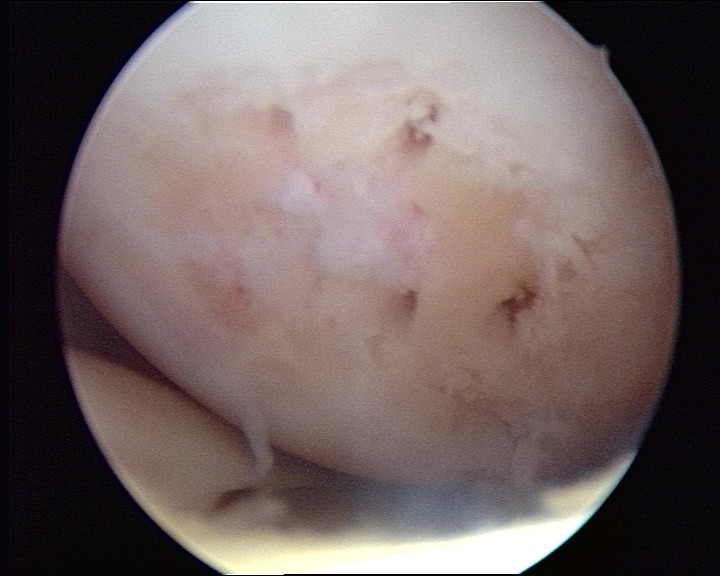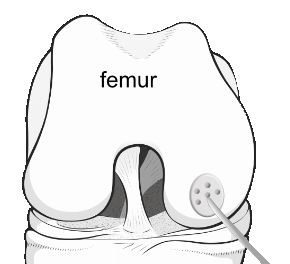FEATURED TECHNOLOGY
The Regenerative Clinic
✐ Surgeon: Dr. Konrad Slynarski speaks to The Regenerative Clinic about using adipose tissue to heal joints
✐ Patient Testimonial: Angela Raynes Speaks about her incredible progress after Lipogems at The Regenerative Clinic
✐ Surgeons: Leaders in Regenerative Medicine speak to The Regenerative Clinic UK about Lipogems and PRP
Marrow stimulation involves different techniques that allow bone marrow cells to enter a joint cartilage defect to enhance healing there.

Here the normal white joint cartilage has deteriorated, exposing the yellowish bone underneath. The surgeon has used a microfracture pick to create holes in this area through the subchondral bone to allow bleeding.

Illustration to show the microfracture pick, which is a long thin instrument that is passed through the arthroscopy keyholes, and tapped with a mallet from outside the joint.
Marrow stimulation techniques
The issue is that joint cartilage has no blood supply of its own and when damaged it has little ability to heal itself. Surgeons discovered that penetrating the bone plate below the cartilage layer allowed blood to enter the area, causing a local clot and creating the environment for progenitor cells and growth factors to cover the damaged area with fibrocartilage. An early technique evolved of drilling tiny holes from within the knee joint through the cartilage base plate (Pridie drilling) , but this apparently could cause heat damage and the technique was superceded by microfracture, where a small 'pick' was used to create the holes. Microfracture is now giving way to nanofracture, which is more of a needling technique, and this is now often done in combination with deliberate enhancement of the healing environment with other regenerative methods.
